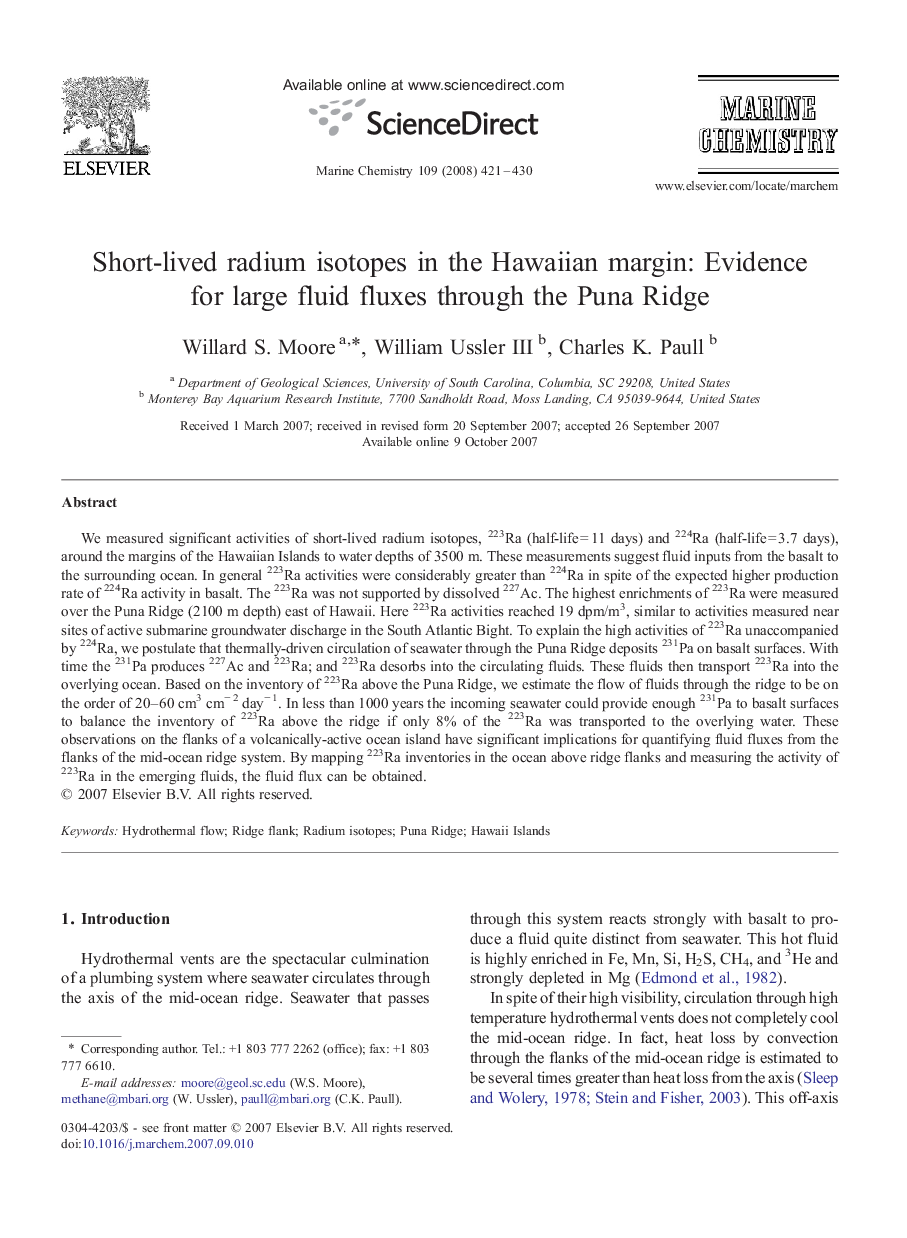| Article ID | Journal | Published Year | Pages | File Type |
|---|---|---|---|---|
| 1263500 | Marine Chemistry | 2008 | 10 Pages |
We measured significant activities of short-lived radium isotopes, 223Ra (half-life = 11 days) and 224Ra (half-life = 3.7 days), around the margins of the Hawaiian Islands to water depths of 3500 m. These measurements suggest fluid inputs from the basalt to the surrounding ocean. In general 223Ra activities were considerably greater than 224Ra in spite of the expected higher production rate of 224Ra activity in basalt. The 223Ra was not supported by dissolved 227Ac. The highest enrichments of 223Ra were measured over the Puna Ridge (2100 m depth) east of Hawaii. Here 223Ra activities reached 19 dpm/m3, similar to activities measured near sites of active submarine groundwater discharge in the South Atlantic Bight. To explain the high activities of 223Ra unaccompanied by 224Ra, we postulate that thermally-driven circulation of seawater through the Puna Ridge deposits 231Pa on basalt surfaces. With time the 231Pa produces 227Ac and 223Ra; and 223Ra desorbs into the circulating fluids. These fluids then transport 223Ra into the overlying ocean. Based on the inventory of 223Ra above the Puna Ridge, we estimate the flow of fluids through the ridge to be on the order of 20–60 cm3 cm− 2 day− 1. In less than 1000 years the incoming seawater could provide enough 231Pa to basalt surfaces to balance the inventory of 223Ra above the ridge if only 8% of the 223Ra was transported to the overlying water. These observations on the flanks of a volcanically-active ocean island have significant implications for quantifying fluid fluxes from the flanks of the mid-ocean ridge system. By mapping 223Ra inventories in the ocean above ridge flanks and measuring the activity of 223Ra in the emerging fluids, the fluid flux can be obtained.
